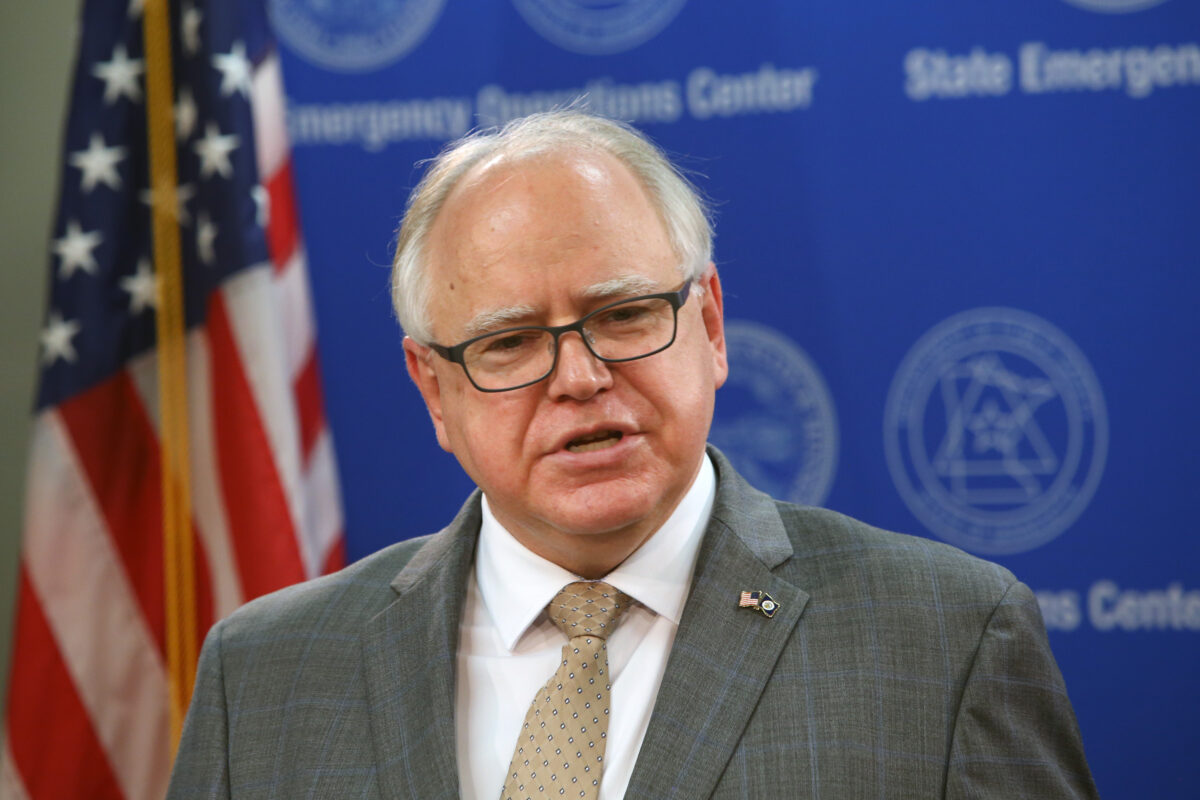Tim Walz’s Governorship of Minnesota: Minnesota Tim Walz

Tim Walz, a former teacher and congressman, became the 41st governor of Minnesota in 2019. His governorship has been marked by a series of policies and initiatives aimed at addressing key issues facing the state, including education, healthcare, and the economy.
Major Policies and Initiatives
During his governorship, Walz has implemented a range of policies and initiatives across various sectors. These include:
- Education: Walz has prioritized funding for public education, increasing per-pupil spending and investing in early childhood education programs. He has also championed initiatives to address the teacher shortage and improve student outcomes.
- Healthcare: Walz has focused on expanding access to affordable healthcare, including supporting the Affordable Care Act and implementing policies to lower prescription drug costs. He has also worked to address mental health issues and substance abuse.
- Economy: Walz has implemented policies to support economic growth, including investing in infrastructure, promoting clean energy, and supporting small businesses. He has also worked to address income inequality and create opportunities for all Minnesotans.
- Environment: Walz has made environmental protection a priority, working to address climate change, protect natural resources, and promote clean energy.
Effectiveness of Walz’s Policies
The effectiveness of Walz’s policies in addressing key issues facing Minnesota has been a subject of debate. Supporters point to improvements in education funding, healthcare access, and economic growth. Critics argue that these improvements have been insufficient and that more needs to be done to address challenges such as income inequality and the cost of living.
Challenges and Opportunities
As governor of Minnesota, Walz faces a number of challenges, including:
- Budgetary constraints: Minnesota faces a tight budget, which limits the state’s ability to fund new programs and initiatives.
- Political polarization: The Minnesota legislature is deeply divided, making it difficult to pass legislation on key issues.
- Economic inequality: Minnesota has a significant income gap, with a growing number of residents struggling to make ends meet.
- Climate change: Minnesota is facing the impacts of climate change, including more extreme weather events and rising temperatures.
Walz also has a number of opportunities to address these challenges, including:
- Investing in education and workforce development: By investing in education and workforce development, Minnesota can ensure that its residents have the skills and knowledge they need to succeed in the 21st-century economy.
- Promoting economic growth: By promoting economic growth, Minnesota can create jobs and improve the standard of living for its residents.
- Addressing climate change: By addressing climate change, Minnesota can protect its environment and ensure a sustainable future for its residents.
Public Perception of Walz’s Performance
Public perception of Walz’s performance as governor is mixed. Some Minnesotans approve of his handling of key issues such as education and healthcare, while others criticize his approach to the economy and other issues. Walz’s approval ratings have fluctuated over time, reflecting the changing political landscape and the public’s perception of his performance.
Tim Walz’s Impact on Minnesota

Tim Walz’s governorship of Minnesota has been marked by significant policy decisions and actions that have impacted various aspects of the state’s social, economic, and political landscape. His tenure has been characterized by a focus on issues like education, healthcare, and economic development, while also navigating challenging situations like the COVID-19 pandemic and social unrest. Understanding the impact of his decisions is crucial for evaluating his legacy and understanding the trajectory of Minnesota in the years to come.
Education Policy
Tim Walz’s approach to education has been characterized by a commitment to increased funding for public schools and a focus on closing achievement gaps. He has championed initiatives aimed at expanding access to early childhood education, increasing teacher pay, and providing more resources for students with special needs. The impact of these policies is evident in the state’s improved educational outcomes, with Minnesota consistently ranking among the top states in student achievement. However, critics argue that these policies have not addressed systemic issues in education, such as inequities in funding and access to quality education for students from marginalized communities.
Healthcare Reform, Minnesota tim walz
Walz has prioritized healthcare reform, focusing on expanding access to affordable healthcare for all Minnesotans. He has supported the expansion of Medicaid under the Affordable Care Act, leading to a significant increase in the number of individuals covered by health insurance. He has also advocated for policies aimed at lowering prescription drug costs and improving mental health services. While these efforts have had a positive impact on healthcare access, challenges remain in addressing the rising costs of healthcare and ensuring that all Minnesotans have access to quality care.
Economic Development
Tim Walz’s economic policies have focused on fostering job growth and supporting small businesses. He has implemented initiatives aimed at attracting new businesses to the state, investing in infrastructure, and promoting innovation. These policies have contributed to a period of economic growth in Minnesota, with the state experiencing a steady increase in employment and a decline in unemployment rates. However, critics argue that these policies have not adequately addressed income inequality and the challenges faced by low-wage workers.
Response to COVID-19
The COVID-19 pandemic presented a significant challenge to Tim Walz’s governorship. He implemented a series of public health measures, including stay-at-home orders and mask mandates, to slow the spread of the virus. These measures were met with mixed reactions, with some praising the governor’s decisive action while others criticized the restrictions as overly burdensome. Walz’s handling of the pandemic has had a lasting impact on the state, both in terms of public health and economic recovery.
Social Justice and Racial Equity
Tim Walz has made addressing social justice and racial equity a key priority of his administration. He has supported policies aimed at promoting diversity and inclusion, addressing systemic racism, and improving the lives of marginalized communities. His efforts have been met with both praise and criticism, with some commending his commitment to these issues while others argue that his actions have not gone far enough.
Legacy
Tim Walz’s legacy as governor of Minnesota is likely to be shaped by his commitment to education, healthcare, and economic development, as well as his handling of the COVID-19 pandemic and social justice issues. His policies have had a significant impact on the state, both in terms of its economic prosperity and its social fabric. While his legacy is still being written, his tenure as governor is likely to be remembered for his focus on improving the lives of all Minnesotans.
Minnesota tim walz – Governor Tim Walz of Minnesota has been a strong advocate for public health, and his policies have often been met with mixed reactions. One area of concern that has recently emerged is the potential link between certain sweeteners and blood clots.
The sweetener erythritol, found in many processed foods, has been linked to an increased risk of blood clots, as explained in this article on erythritol blood clots. This new information may lead to further scrutiny of food additives and their impact on public health, potentially influencing future policy decisions by Governor Walz.
Minnesota Governor Tim Walz, known for his pragmatic approach to governance, recently visited a local Costco, a store renowned for its bulk deals and efficiency. While there, he witnessed firsthand the speed and security of the costco membership card scanners , a testament to the company’s commitment to customer service.
This experience likely reinforced Governor Walz’s belief in the power of technology to streamline processes and enhance everyday experiences.